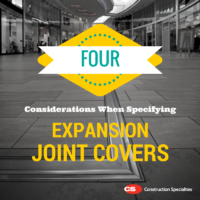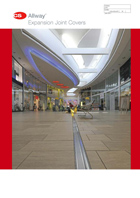There are several key criteria you must consider for expansion joint cover specification, but the following have the greatest impact on the selection process and are ranked accordingly:
 Structural joint opening. This is nearly always established by the structural engineer and determines the size of cover needed.
Structural joint opening. This is nearly always established by the structural engineer and determines the size of cover needed.- Anticipated movement. Again, determined by the structural engineer and normally specified as plus or minus ‘x’ when ‘x’ may be a dimension, i.e. 10mm, or a percentage of joint opening i.e. 50%.
- Type of building. The anticipated use of the building will help determine the type of cover system chosen. For example, a hospital will require covers that are easy to keep clean and also have a flush top surface since wheeled equipment is an aspect of normal building occupation. This would lead to the selection of a gasketed cover system. We recommend that the selection process start with the choice of floor cover as this is affected the most by such building usage. Wall covers are then simply matched to the chosen floor cover.CAUTION: rolling loads can have a significant impact on the function of a cover system. If heavy-wheeled equipment is expected, such as in airports, covers labeled “heavy duty” should be selected.
- Aesthetic considerations. Once the above criteria are established, the final piece of the puzzle is appearance. Historically seismic joint covers have been known to ruin even the most carefully designed interior finishes scheme. Fortunately, CS has developed a complete range of covers with reveals that help conceal most of the cover plate regardless of the joints.
If you are ever unsure of which joint to select for your project we are here to help:
- Call: 01296 652800
- Email: sales@c-sgroup.co.uk
